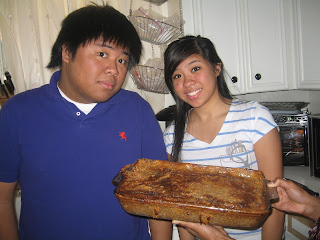Food and Oral History: Balut
My sister shows off her contribution to the Merienda. This edible surprise will scare you if you are not familiar with this Filipino appetizer. I know of many Filipinos who dare not touch this unless they are drunk. It is exotic and it is strange. It even looks a little disgusting. My father said something to me growing up about the etiquette of eating this culinary freak of nature. He said "you must eat it in a movie theatre so you do not have to look at it." The mysterious delicacy I build up here is the legendary balut. According to Wikipedia, a balut is a fertilized duck (or chicken) egg with a nearly-developed embryo inside that is boiled alive and eaten in the shell. Popularly believed to be an aphrodisiac and considered a high-protein, hearty snack, balut are mostly sold by street vendors in the regions where they are available. It is commonly sold as streetfood in the Philippines . The Filipino and Malay word balut


